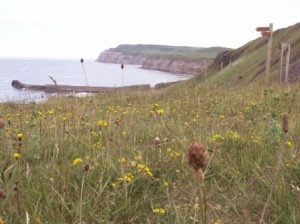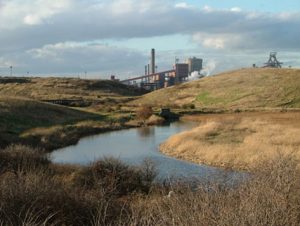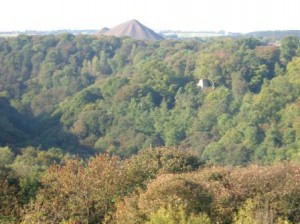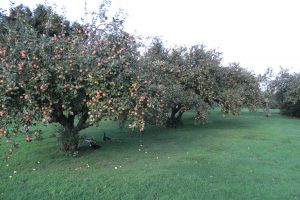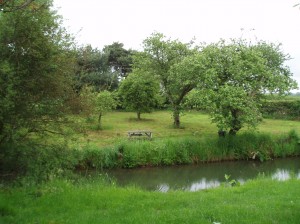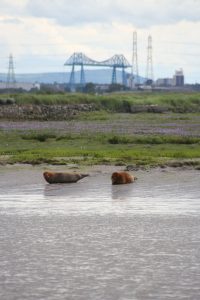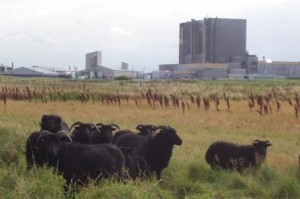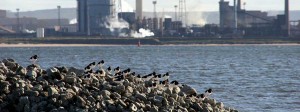National context
Geology, landscape, wildlife and the historic environment all contribute to local distinctiveness and a sense of place. Quality of place is recognised as an essential ingredient for a thriving economy and maintaining sustainable and vibrant communities. Celebrating what is special and unique about a locality plays an important role in bolstering local pride and contributes to community cohesion.
“Our natural environment gives us a sense of place, pride and identity. Nature inspires and moves us. Connecting with nature helps children learn, and improves people’s health and wellbeing… While the natural environment can do much to benefit our health and education and make our daily lives happier and richer, we also have an opportunity to protect and improve it.” The Natural Environment White Paper (2011)
In the Tees Valley
Varied and distinctive landscapes
The Tees Valley contains several distinctive landscapes including part of the North York Moors National Park and part of the North Yorkshire and Cleveland Heritage Coast. Most of Tees Valley is within the ‘Tees Lowlands’ National Character Area (as defined by Natural England). This is characterised by a broad low lying plain of gently undulating, predominantly arable farmland, with some pasture and wide views to distant hill. The meandering, slow moving River Tees flows through the heart of the area, dividing the lowlands to north and south giving a contrast of quiet rural areas with extensive urban and industrial development concentrated along the lower reaches of the River Tees, the estuary and coast.
Large scale chemical and oil refining works, dock facilities and other heavy plants along the Tees estuary form a distinctive skyline both day and night. To the south east of the Tees Lowlands lie the North York Moors and Cleveland Hills, an upland plateau landscape dominated by heather moorland, with a series of dales and steep sided river valleys and a dramatic landscape of high sea cliffs and small bays. There is a small area of the Durham Magnesian Limestone Plateau within the borough of Hartlepool and is recognisable by its higher elevation.
The TVNP is responsible for the selection of Local Sites (Geological and Wildlife). These sites represent local character and distinctiveness of wildlife based on selection criteria developed on local geological and ecological knowledge and surveys.
Celebrating traditional orchards of the Tees Valley
Wildflower Ark, with funding through the Heritage Lottery Fund, carried out this community project in 2011/12 which involved extensive research into locating and recording old orchards and a programme of activities to increase awareness and appreciation of the history of fruit growing and orchards in the Tees Valley. They recorded remnants of historic orchards associated with farms and country houses as well as commercial growing centres of the Norton area in the 19th Century. Many orchards remain as valuable habitats for wildlife and contain old varieties of apple and pear that are now endangered.
North Tees Natural Network
The Tees is one of the North Sea’s principal estuaries. With its port, industry and large population it is of major significance to the United Kingdom’s economy. It is also internationally important for its bird population and is significant for its wildlife habitats and other animals including seals. The site contains two Sites of Special Scientific Interest (SSSI) and the whole reserve is part of the Teesmouth and Cleveland Coast Special Protection Area (SPA). With the opening of the RSPB’s reserve and Discovery Centre at Salthome there are increased opportunities for people to experience this distinctive Tees Valley landscape, where seals can be seen sunbathing against a backdrop of industry.
A number of organisations, including Natural England, Environment Agency, RSPB, Tees Valley Wildlife Trust, Teesside Environmental Trust, Hartlepool Borough Council Stockton Borough Council, Tees Valley Unlimited and INCA representing industry, have formed the North Tees Natural Network Partnership. The Partnership seeks to achieve coordinated management of, and where appropriate access to, nature conservation sites stretching in an arc from the Transporter Bridge to Seaton Carew. The network will showcase how an internationally important wildlife area can exist in harmony with major industry as well as being a valuable resource for people. Plans to enhance access and improve facilities will provide visitors with opportunities to get closer to local wildlife .
Elwick Village Wildlife Atlas
Hartlepool Borough Council worked with the Limestone Landscapes Partnership project on the Elwick Village Atlas. Sponsored by the HLF and Tees Valley Community Foundation, the Village Atlas encouraged and trained people from the Parish to explore and record their wildlife. To facilitate this, the Limestone Landscapes set up a WildWatch website for each of the village atlas areas in the project so that people could record their sightings.

